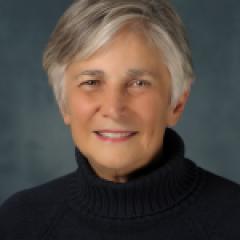Diane Ravitch’s Blog: Who Is Malala?
When I posted the other day about Malala Yousafzai, I said that she had been shot in the head, survived, became an advocate for the education of girls, and won a Nobel Peace Prize.
But there is so much more to know about this remarkable young woman.
“Her family runs a chain of schools in the region. In early 2009, when she was 11–12, Yousafzai wrote a blog under a pseudonym for the BBC detailing her life under Taliban occupation, their attempts to take control of the valley, and her views on promoting education for girls in the Swat Valley. The following summer, journalist Adam B. Ellick made a New York Times documentary about her life as the Pakistani military intervened in the region. Yousafzai rose in prominence, giving interviews in print and on television, and she was nominated for the International Children’s Peace Prize by South African activist Desmond Tutu.
On the afternoon of 9 October 2012, Yousafzai boarded her school bus in the northwest Pakistani district of Swat. A gunman asked for her by name, then pointed a pistol at her and fired three shots. One bullet hit the left side of Yousafzai’s forehead, travelled under her skin through the length of her face, and then went into her shoulder. In the days immediately following the attack, she remained unconscious and in critical condition, but later her condition improved enough for her to be sent to the Queen Elizabeth Hospital in Birmingham, England, for intensive rehabilitation. On 12 October, a group of 50 Islamic clerics in Pakistan issued a fatwā against those who tried to kill her, but the Taliban reiterated their intent to kill Yousafzai and her father, Ziauddin Yousafzai.
The assassination attempt sparked a national and international outpouring of support for Yousafzai. Deutsche Welle wrote in January 2013 that Yousafzai may have become “the most famous teenager in the world.” United Nations Special Envoy for Global Education Gordon Brown launched a UN petition in Yousafzai’s name, demanding that all children worldwide be in school by the end of 2015; it helped lead to the ratification of Pakistan’s first Right to Education Bill.
A 2013 issue of Time magazine featured Yousafzai as one of “The 100 Most Influential People in the World”. She was the winner of Pakistan’s first National Youth Peace Prize, and the recipient of the 2013 Sakharov Prize. In July that year, she spoke at the headquarters of the United Nations to call for worldwide access to education, and in October the Government of Canada announced its intention that its parliament confer Honorary Canadian citizenship upon Yousafzai. Even though she is fighting for women’s and children’s rights, she did not describe herself as feminist when asked on Forbes Under 30 Summit. In February 2014, she was nominated for the World Children’s Prize in Sweden. In May, Yousafzai was granted an honorary doctorate by the University of King’s College in Halifax. Later in 2014, Yousafzai was announced as the co-recipient of the 2014 Nobel Peace Prize for her struggle against the suppression of children and young people and for the right of all children to education. Aged 17 at the time, Yousafzai became the youngest-ever Nobel Prize laureate.”
Some readers have insisted that if she doesn’t take the SAT, she should be rejected by Stanford. I think that’s ridiculous. The admissions process for an elite college always involves a mix of priorities. Frankly, she honors Stanford by expressing an interest in becoming a student there.
Our readers have debated whether Stanford should insist that she take the SAT to prove her ability to enroll there. Some say, a rule’s a rule, no exceptions. Personally, I think that Stanford’s pig-headed insistence on subjecting this brilliant young woman to a standardized test aligned to the Common Core is absurd.
Our blog poet wrote a poem about Malala and this situation:
“”One child, one teacher, one book, and one pen can change the world. Education is the only solution.” — Malala Yousafzai, at her UN speech
“One student number , one ed-u-bot, one iPad, and one test can change the world. Testing is the only solution.” — Arne Duncan
This blog post, which first appeared on the
website, has been shared by permission from the author.
Readers wishing to comment on the content are encouraged to do so via the link to the original post.
Find the original post here:
The views expressed by the blogger are not necessarily those of NEPC.
